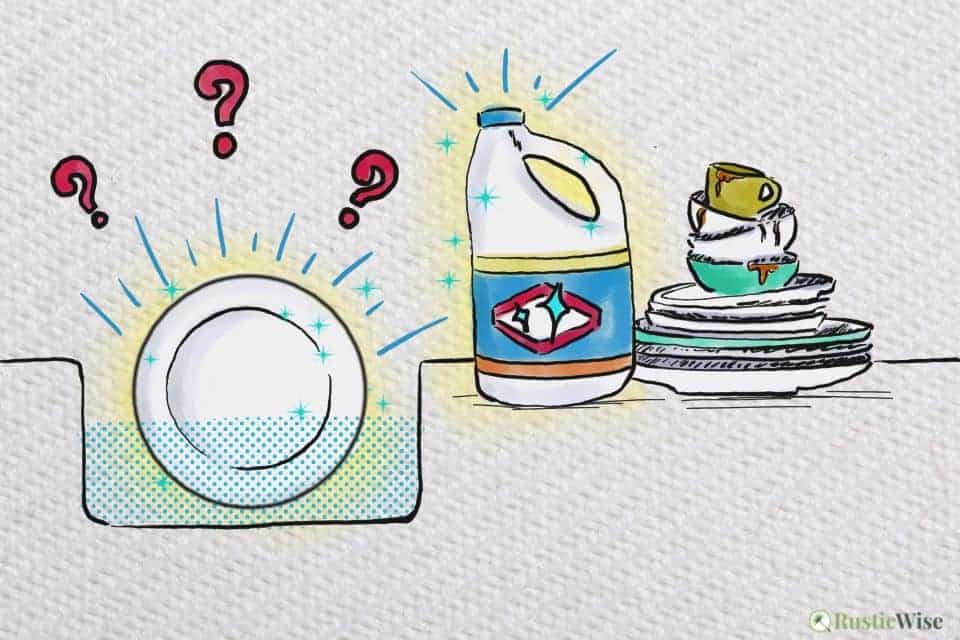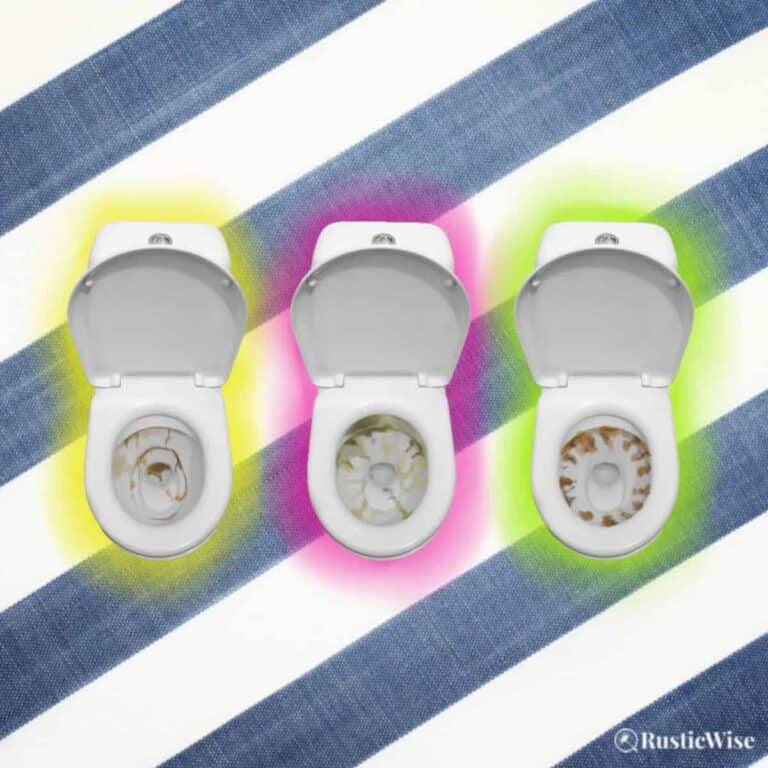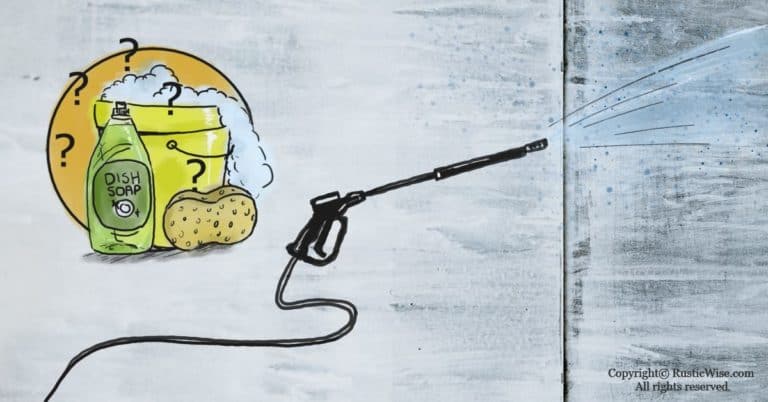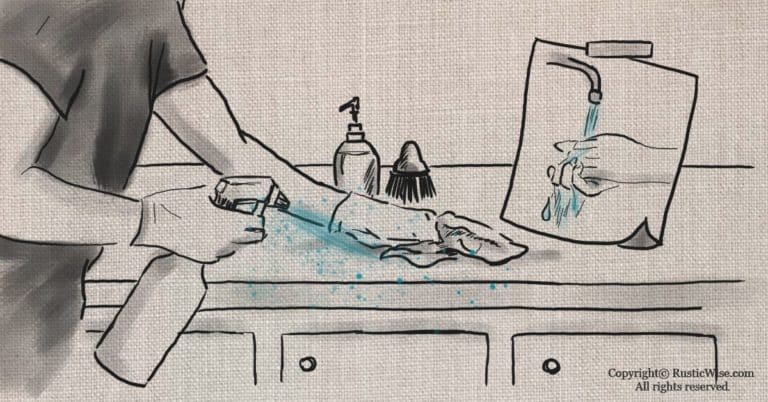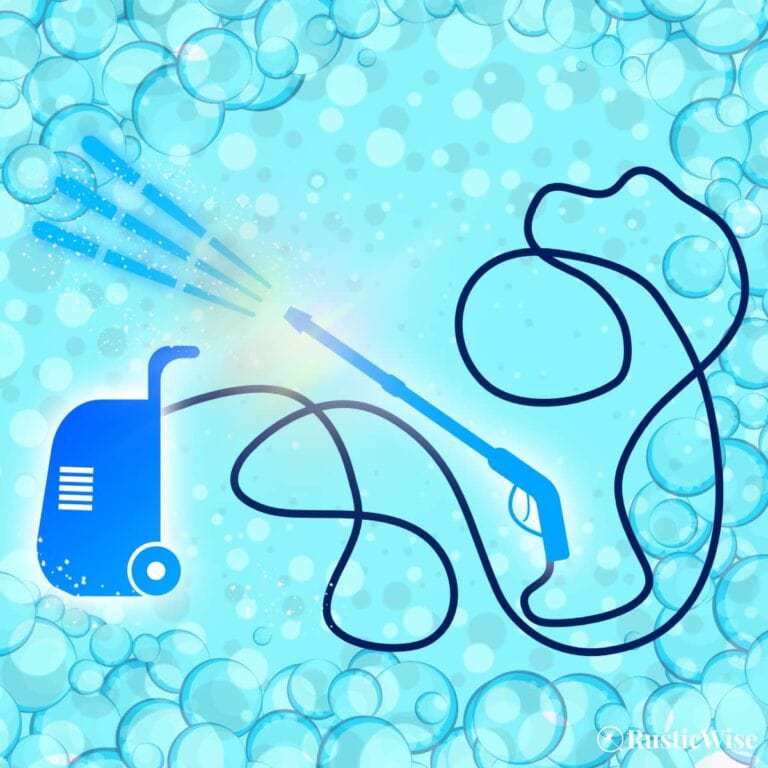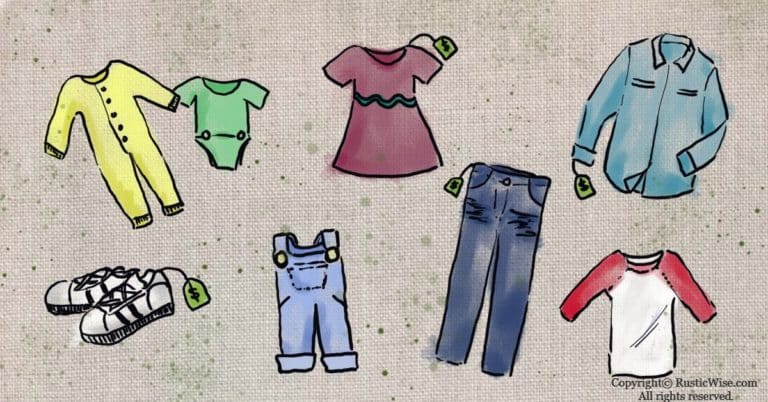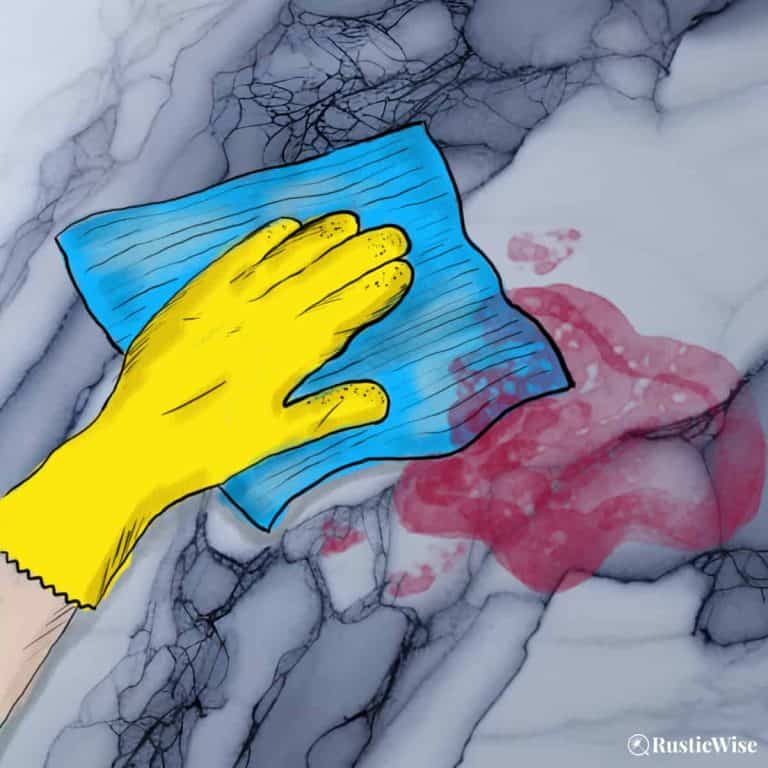Can You Wash Dishes with Bleach? Key Tips on Using Bleach Safely
For those times when you want to get a deep clean to kill viruses and bacteria, the first thing most people think of is breaking out a bottle of bleach.
But can you wash dishes with bleach safely? Bleach can be used as a further disinfecting step after you’ve already washed dishes with soapy water and rinsed them. Never mix bleach with dish soap or other cleaners! You should first dilute the bleach in water to create a solution to dip dishes in.
Disinfecting dirty dishes with bleach isn’t something you need to do for everyday use. We’ll take a look at how to safely disinfect dishes step by step, plus other bleach safety tips.
Roll up your sleeves and let’s get started!
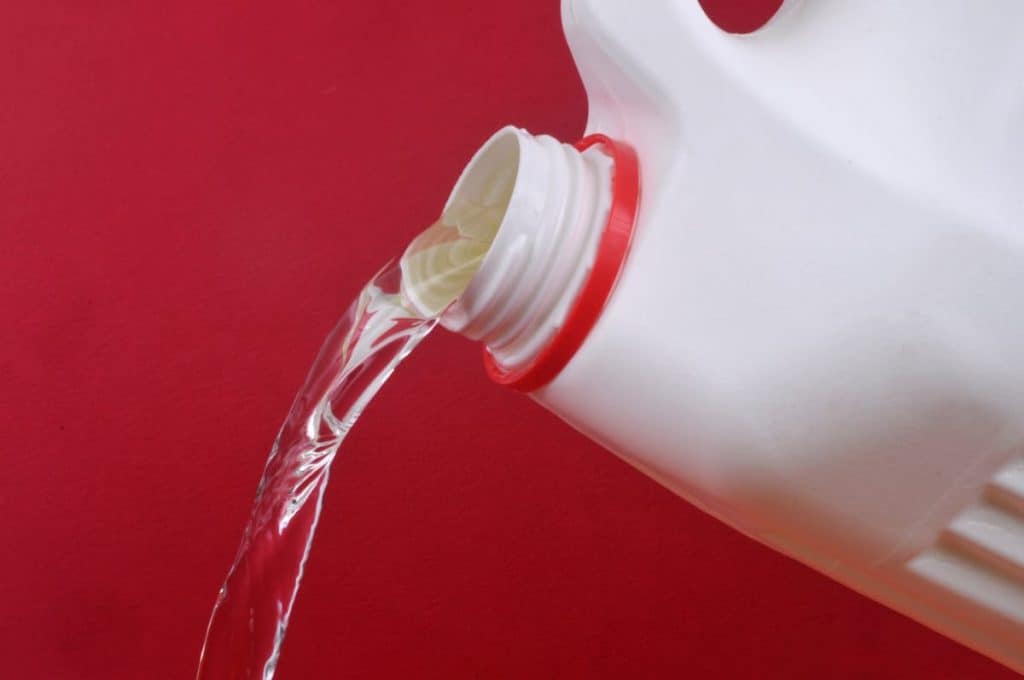
The difference between cleaning, sanitizing, and disinfecting
The terms cleaning, sanitizing, and disinfecting are used interchangeably. But there are key differences according to the U.S. Environmental Protection Agency (EPA).¹
The EPA classifies products used as sanitizers and disinfectants as “antimicrobial pesticides.”
- Cleaning: This refers to the process of using regular soap or detergent (such as Dawn dish soap) or another cleaning product to remove any dirt or debris from surfaces. Cleaning may not kill all germs, but helps reduce the number of harmful bacteria. This is the first step before you move on to sanitizing or disinfecting.
- Sanitizing: This involves killing bacteria (but NOT viruses) on surfaces with products. By sanitizing surfaces, you are reducing the number of bacteria and lowering them to a safer level. Sanitizing doesn’t necessarily clean surfaces.
- Disinfecting: This refers to the use of products designed to kill both bacteria AND viruses. This involves products such as bleach. Effective disinfecting practices may involve leaving the product on surfaces for a certain timeframe. Disinfecting doesn’t necessarily clean surfaces.
What’s in household bleach?
Most of us have a bottle or two of liquid household bleach at home. You might use it for laundry to brighten whites, or as a disinfectant solution.
The main active ingredient in regular bleach is a sodium hypochlorite solution which ranges in concentration between 2 and 10 percent.² The stronger the sodium hypochlorite solution, the more disinfecting power the bleach has.
Tip: The U.S. Centers for Disease Control and Prevention (CDC) recommends using unscented chlorine bleach with a sodium hypochlorite concentration between 5 and 10 percent when preparing bleach solutions for disinfecting dishes for food safety. (This is the standard amount found in most household bleach products).³
Do you need to wash dishes with bleach?
No, for everyday washing, you don’t need to use bleach. Regular dish soap with warm water works just fine to clean and remove surface debris for most situations. Washing dishes with bleach every day would be overkill.
When you may want to use bleach on dishes
Sometimes life throws you a curveball. There are certain times when you may wish to take the extra step to disinfect or sanitize your dinnerware:
- When a sick family member has used dinnerware.
- When dishes have been exposed to floodwater and there is an environmental health concern.
- Utensils that have touched raw meat should be sanitized to prevent cross-contamination and foodborne illness.
Things you should NOT wash with bleach
Bleach works best on hard, non-porous surfaces. Don’t use bleach on the following surfaces:
- Porous materials such as wood, or fabrics.
- Stone countertops such as granite or quartz.
- Most metal surfaces, including stainless steel, silver, or aluminum (may corrode). This is surprising as many people use abrasive cleaners or straight-up bleach to clean their sinks. But with regular use, the sodium hypochlorite in chlorine bleach can etch the protective layer on stainless steel sinks and cause permanent pitting or staining.
- Scratched or chipped enameled cookware. The bleach may eat away at the cookware.
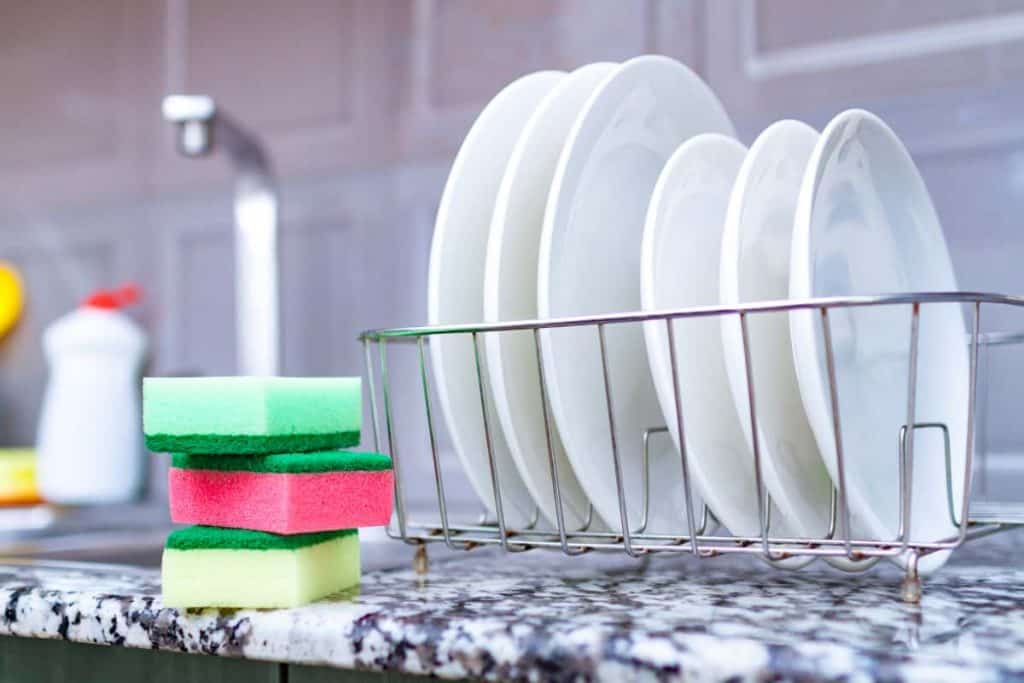
Can you put bleach in your dish water?
No, it’s NOT safe to mix bleach with dish soap or other cleaners (especially ammonia). Mixing bleach with dish water may release toxic gases. Besides, the bleach may get into your eyes or irritate your skin.⁴
While you might think you’re getting a two-for-one deal by adding a bit of bleach to disinfect dinnerware and save yourself time, the dish soap makes the bleach ineffective—they cancel each other out.
It’s best to wash dishes first, then follow up with a bleach cleaning solution.
Can I use Clorox to wash dishes?
If you’re wondering whether it’s safe to wash dishes with straight-up bleach, no, it’s not recommended. First of all, bleach should always be diluted before using. (And, even once diluted, it poses a splash hazard when using.)
Secondly, as a strong disinfectant, liquid bleach is not designed to remove oily food particles like dish detergent. So even if you tried to substitute this strong disinfectant for dish soap, your dishes may not exactly look sparkling clean.
Essential bleach safety tips before you get started
- Use a plastic wash basin (or similar bleach-safe container) rather than your kitchen sink to hold your bleach solution. Stainless steel sinks may get damaged with bleach.
- Never mix bleach with ammonia or other acid-based cleaners! It creates a chemical reaction and releases toxic fumes.
- Don’t bother trying to add bleach to your soapy water, as mentioned in the section above. Dish soap and bleach when mixed will cancel out their cleaning/disinfecting properties.
- Protect your eyes! Wear gloves and avoid breathing in fumes.
Don’t forget to dilute the bleach!
An essential bleach safety tip is to use the correct concentration. Always dilute bleach before using for cleaning dishes.
The CDC recommends using:
- 1 tablespoon (15 milliliters) bleach
- 1 gallon (3.8 liters) water
Tip: Regular tap water is fine. Use cold water when mixing as hot water weakens the main active ingredient in bleach.
Can you wash dishes with bleach? Here’s how to disinfect dishes with bleach step-by-step
- Wash dishes with regular liquid dish soap and clean, hot water.
- Rinse well with clean water.
- Put on protective gloves. Prepare a bleach-safe bowl, or wash basin with your sanitizing solution: 1 tablespoon of liquid bleach to 1 gallon of warm water. Do not use hot water as the high temperature causes bleach to dissipate.⁵
- Let the dishes sit in the sanitizing solution for at least 5 minutes.²
- Remove dishes and allow to air dry. Avoid using a drying towel as this may introduce bacteria.
Remember to safely dispose of the bleach solution down the sink or toilet afterwards.
Can you reuse a bleach solution?
No, it’s not a good idea to reuse a bleach solution. Bleach water begins to lose its potency after about 24 hours.²
Other ways to sanitize dishes (without bleach)
Besides using bleach, there are a few other ways you can rid your dinnerware of harmful germs.
- Dishwasher sanitize feature: Some dishwashers have a sanitize feature that heats dishes to higher temperatures than regular cycles to effectively kill some bacteria. North Carolina State University says temperatures of 170–180 degrees Fahrenheit (77–82 degrees Celsius) are required to sanitize and reduce the number of bacteria to safe levels. (Note that sanitizing doesn’t remove all bacteria or viruses.)⁵
- Boiling hot water: This hot water method is the good old-fashioned way to remove most microorganisms. Place clean dishes in a clean basin. Prepare a kettle of boiling water. Pour boiling water over the dishes and let them sit for several minutes. (Make sure dishes are at least room temperature to avoid cracking.) Remove once cool and allow dishes to air dry.
Is it okay to put bleach in dishwasher with dishes?
Adding bleach to a dishwasher isn’t always recommended.
If you’re wondering whether you need to add a boost of cleaning power to your next load of dirty dishes, you don’t need to. Most commercial dishwasher detergents or tablets already have bleach as an ingredient. And, if you have a sanitize option on your machine, this should take care of your cleaning needs.
If you’re thinking of using this liquid cleaner to deep clean the interior of the machine, it’s not recommended if you have stainless steel parts. It’s only safe to use on machines with plastic components. Please check your manufacturer’s instructions for more details.
Can you wash dishes with bleach? Final thoughts
For everyday purposes, there’s no need to wash dishes with bleach—hot (or warm) soapy water works just fine. But, if you’d like to take a few extra steps, you can prepare a diluted bleach solution of 1 tablespoon liquid chlorine bleach to 1 gallon of water in a clean wash basin.
Bleach works to disinfect dishes by killing bacteria and viruses. First, wash dishes with soapy water and rinse. Next, let your dinner dishes soak in the bleach solution and then air dry.
Never mix bleach with other cleaning solutions, such as dish soap or ammonia!
Related questions
What’s the shelf life of bleach?
Bleach begins to lose its potency after about 1 year after production. Store bleach away from direct sunlight and heat. Ideally, store bleach at room temperatures below 77 degrees Fahrenheit (25 degrees Celsius).
Is dish soap a disinfectant?
The soap and water mixture you use to wash your dishes should not be confused with actual disinfectant. Disinfectants are a liquid or chemical substance used to kill microorganisms. Soap and water is helpful in removing some bacteria and food residue from the surface of a dish—it does not actively kill all types of bacteria or viruses.
Use soap and water for general cleaning. Effective disinfectants (such as bleach) are regulated and have been proven to have the ability to kill off a wide range of microorganisms and prevent the spread of disease via surface-to-surface contact.
Do dishwashers sanitize dishes?
Yes, some dishwashers have a sanitize setting which effectively heats dishes at higher temperatures for longer periods of time to reduce the number of microorganisms. Keep in mind that sanitizing involves reducing the level of bacteria to an acceptable, safer level, but doesn’t effectively kill all bacteria.
How do you remove stubborn stains in the kitchen sink?
White vinegar and baking soda are two powerful and natural cleaning ingredients that when combined, create a fizzing action that helps remove tough stains.
To use, first sprinkle a bit of baking soda over the stain. Next pour a splash of white vinegar onto the area. Let it sit for 5 minutes. Then use a sponge or a dish cloth to gently scrub away at the spot. Baking soda is a gentle abrasive that cleans without damaging surfaces.
Can you wash dishes in cold water?
While technically, you can use cold water, it doesn’t clean as well as hot water. It’s always recommended using warm or hot water combined with dish soap to effectively hand wash dishes.
Hot water when rinsing also reduces the occurrence of water spots on dishes.
👉 If you like this post, see other Timeless Cleaning Tips You Need To Know. 🌟
Would you like more timeless tips via email?
Fun tips to help you live an independent, self-sustaining lifestyle. Opt-out at any time.


References
- U.S. Environmental Protection Agency (EPA), What’s the difference between products that disinfect, sanitize, and clean surfaces?, https://www.epa.gov/coronavirus/whats-difference-between-products-disinfect-sanitize-and-clean-surfaces. Accessed October 2023.
- Michigan State University, COVID-19 – Disinfecting with Bleach, https://www.canr.msu.edu/news/covid-19-disinfecting-with-bleach. Accessed October 2023.
- U.S. Centers for Disease Control and Prevention (CDC), Cleaning and Sanitizing with Bleach after an Emergency, https://www.cdc.gov/disasters/bleach.html. Accessed October 2023.
- California Department of Pesticide Regulation, Bleach factsheet, https://www.cdpr.ca.gov/docs/dept/factshts/bleach_soap.pdf. Accessed October 2023.
- North Carolina Cooperative Extension, Washing and Sanitizing Kitchen Items, https://content.ces.ncsu.edu/washing-and-sanitizing-kitchen-items. Accessed October 2023.

Author: Josh Tesolin
Josh is co-founder of RusticWise. When he’s not tinkering in the garden, or fixing something around the house, you can find him working on a vast array of random side projects.

